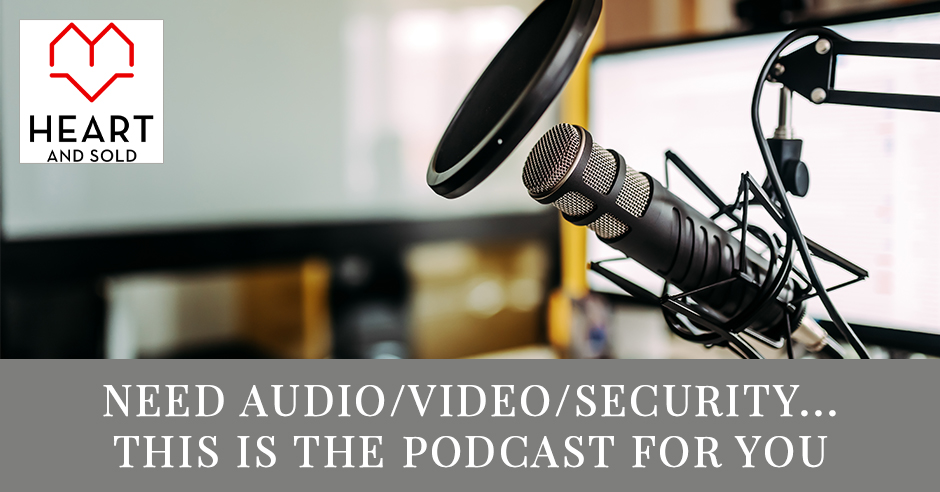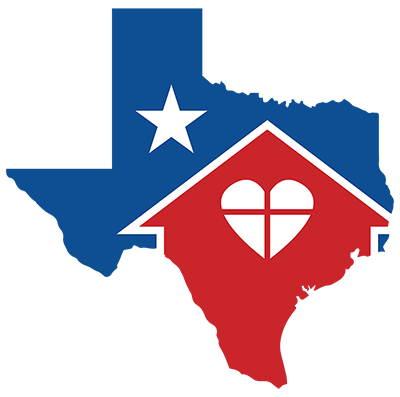
Nowadays, technology is very rampant and in makes our lives better and enrich our quality of life. Learn more about audio-video security services with Ryan Williams, the owner of Loop Audio Video Security. Ryan explains how the systems work and gives us a clear understanding of how to apply this great technology to benefit our own lives. He also touches on where he’s been, what he’s doing now, what his service offers, and leaves us with some inspirational insights for the future as well.
Heart and Sold Group is a social extension of the Heart and Sold Austin Real Estate business powered by Keller Williams, the Luxury Division.
—
Listen to the podcast here
Need Audio/Video/Security… This Is The Podcast For You
Chadwin Barley & Ryan Williams with Loop Audio Video Security
Our guest’s name is Ryan Williams. He’s the Owner of LOOP Audio Video Security. They do systems for residential and commercial clients consisting of integrating audio, video, lighting controls, cameras and security. The reason why I’m so excited to have Ryan on the show is that in my industry I have a lot of opportunities to refer this type of service out to my clients. I’ve yet to find a good provider that I know will take care of my clients the way I want to take care of them. Ryan brings that to the table and we’re going to learn from him a little bit about where he’s been, what he’s doing now, what his service offers and leave us with some inspirational insights for the future as well. Ryan, how are you?
I’m good.
Thank you so much for joining me on the show. Let’s talk about being an entrepreneur and what you did before you decided to open up LOOP. Let’s segue to what the catalyst was for you to have this business and to do the things that you do now. Tell me about yourself and where you’re coming from.
It was definitely a struggle. I went to college after I graduated. I didn’t know what I wanted to do. I didn’t do the best in school. I eventually decided to sit out of school for a while and randomly, I was selling cars at a dealership. I sold a car during the Christmas break to the professor in the Sound Department at LSU. During the test drive, I was talking with him and it was like, “This is always something that I’ve been intrigued by.” At that point, he’s like, “The next day, you come in and take a tour.” The following week I went in and visited with him. He walked me around the campus and showed me the Sound Department and talked about it more. I wound up registering for school the following week and started. I went back to school and graduated from LSU in Sound Engineering, which is interesting.
Before I sat out, my average GPA was about 2.0. Once I got into the sound, it was 3.8. I got both letters. My mom still has them on academic probation and the dean’s list. It’s definitely a thing. I got into it and I was into it. It’s something that piqued my interest. It started while I was in school. I’m working for a sound company. We’re doing installs in commercial and residential. We were also doing a lot of shows. We’re doing production for concerts. After I graduated, I went to work for a larger production company. We toured all around Texas, Oklahoma, Mexico, Arizona, the central area. We also did installs in a lot of big churches, the old Cowboy stadium, big things like that. It’s bigger AV systems, bigger concerts.
From there, the road was getting old traveling, being a new city every night. I got into military security. Doing federal projects, doing cameras, access control, a lot of hard and perimeter at military bases and government agencies. I did that for ten years and worked my way through the company that I was working for. At some point, it hit me that I wanted to go back on my own, try to do something and take care of the kids and to look for a little bit more opportunities. With that, technology had emerged where AV and security were starting to integrate more tightly together. That was the intent. Whenever I did that, I always try to be more that single source. Instead of having to call these different people, you call one person who would handle all of it.
First of all, thank you so much for sharing. This is so enlightening and super interesting to me. I want to bring out and highlight the fact that you went from being on academic probation to having exemplary grades. Going from a lower GPA to a 3.8 is no small feat in the field of audio engineering. Many of my clients are in the same walk of life that I’m in right now. I have a senior in high school and he’s preparing to go off to school. That message resonates with what we’re going through. Helping our kids to realize that you’re not going to be great at everything, but when you do find that thing that you can be excited and passionate about. It doesn’t feel like work anymore, does it?
No, it definitely changes everything.
A system doesn't do any good if you're not using it. Click To TweetI can hear that passion in your voice.
It’s something that I’ve tried to do with my kids. The more you expose them to, you never know. It was something I was never exposed to until I happened to be talking with a guy on a test drive who was looking to buy a car.
Thank you for sharing that. Let’s go to moving into entrepreneurialism. One of the things that I heard you say is you wanted to have some work-life balance and be focused on your business as well as your family. Tell me a little bit about your family and what brought you to Austin, Texas.
I have four kids, nine, seven, five and four, two boys, two girls. I relocated here because of what AV does. It is a luxury item. I looked at areas that were booming and had the market that needed to sustain and grow the business. That’s one of the reasons why we looked at going over. The other thing was looking at education and stuff that we’ll provide for the kids as well as the things in Austin, hiking and all the outdoor things that are available. That was the reason that brought us here.
You’ve been in Austin for how long?
It’s a month-and-a-half.
How do you like it so far? I’ve got a lot of readers that are considering Austin as their next place to live. Tell us, from hands-on experience, from a newbie, because I’ve been here a long time, they’d love to hear your expression on how you feel Austin has benefit for the goals that you had set forth.
The people you talk to there’s an energy about it and you realize there are opportunities. That’s the biggest thing that drew me to it: the scenery and everything else. We’ve taken the kids hiking and doing all kinds of fun stuff like that, which has been great. I let them see things that we haven’t seen. We moved from New Orleans so we don’t have hills. We also have a lot more humidity than here, which is great because there it’s hot all the time. Here it’s hot, but you go underneath the trees, it’s not as bad. It’s nice. That’s been the biggest thing so far. The school has been great. They’ve adapted well. The big thing in education with the schools, we were at public schools in Louisiana before. We were fortunate to be in one of the best public school districts in the state. Moving them here, still it’s a step above. That’s been the other thing is that they’re doing more things that we’re seeing them do. That’s one of the reasons that I’m pretty excited about is for them to see more, learn more at school and be exposed to more opportunities.

Audio, Video And Security: Listen to what your clients need and tailor your system to them.
Thank you for sharing that. I’m sure that people will resonate with what you had to say about that, being new to the area yourself, but enjoying it so far and embracing all that Austin has to offer. Let’s talk a little bit about your clients because my target market is 500,000 and above in residential real estate transactions. I also have clients that dabble in commercial real estate as well. You and I have gotten to know each other a little bit on the sidelines here. I know personally that you not only work with people who have a need in our own backyard but across the nation where you can support their needs as well. I do have homeowners that have multiple ownership in other areas, beach residents or mountain residents or someplace that they do business in as well. Talk to me about how you can do business, not just here but across the nation and possibly around the world.
When we do stuff like that, projects that are remote, generally we’ll set up a remote management system so we can monitor all the devices that we install. At that point, we can detect when there’s a problem with that device and remotely reset it. At the same time, if the client gets there and something’s a problem, they can call our 24/7 tech support number and somebody could walk them through the phone of updating the system. Most of the time the systems can be updated and remotely reset and will resolve. It’s like 98.7 is the actual statistic number of that it can be done remotely. If there is a problem, usually when we do projects remotely, we find a company there. When we’re doing a job that we know if there is an issue, to get more of a rapid response. Let’s say a device fails, I can call that company up locally and get somebody there quickly to repair it. That way it doesn’t leave that person with the system down long-term.
Let’s back up a little bit. Tell me exactly who is the target market? Who is the perfect client for you? Someone who may be out there reading may think, “This guy knows a lot about what he’s talking about. Maybe my job is too small or what have you.” Tell us who the best client for you is, how to opt-in and get started working with you and the benefits thereof.
I look at every client differently. I don’t just try to go in and sell, “Here’s the most, the best or here are the other options.” I go, “What do they like to do?” I have some clients who don’t even have a TV in the house. They like to listen to music. We have systems where we have speakers everywhere, outdoor. I have one client who has an extensive record collection. We’ve hooked that record player up where you can put something on and play it everywhere across the house. We tailor it to whatever those persons need are. If they need a TV in the living room with some speakers and maybe something in the kitchen, we’ll do that. If somebody is looking for full lighting controls. When they’re out of town, it looks like the house is on. It’s integrated with the alarm where if somebody breaks in, the lights will turn on to scare somebody off.
We listened to what those clients’ needs are and tailor our system to them. A lot of it, what we’ll do is we’ll go in and do different phases because technology is rapidly advancing and rapidly changing, which is what I try to do. I’ve tried to stay ahead of it and know what’s coming, so my client doesn’t have to worry about it. We might put in the backbone of a system for something now knowing that in three years they’re going to want to upgrade to that. How do we minimize that cost in three years? We don’t want to put in a system and go, “We’re going to change out everything in three years.” We put all this in and let us scale it up. In three years, your cost to go to that is more minimal than going, “We’re going to have to go to a complete system that we put in.” We tried to tailor that. We try to figure out what their uses are, how do they plan on using the system and how they would like to use the system in the future and try to design around that and put that system in.
I love the idea that you and I had talked about offline about you monitoring their system and being proactively on top of maintaining that system to make sure that it’s always up and running and doing what it’s supposed to do. Can you speak to that a little bit?
The big thing with that is that it’s one of the options of putting in the equipment on remote management. You’re taking even a small system in a house where it might be a TV in the living room and surround sound and speakers in the kitchen. You might have ten devices in that room that’s basically ten little computers. As everybody knows, there are those times you need to unplug something and plug it back in and resolve it. When you put it in a rack, it makes it hard to get to and other things get on plugs. We set it up where we could remotely detect when something drops offline or freezes or even if your internet connection drops out, it will remotely kill the power to that device and restart the device, which will resolve most issues.
Every problem is a little bit different. You need to tailor your solutions. Click To TweetAt that point, if it doesn’t resolve it, a tech gets involved without the customer’s interaction and see what’s going on with the system. The tech do a little bit of remote troubleshooting without having to get the person on the phone. In that case, they could repair it or update it or do some of the things that need to be done so that way it works properly. If the event that they can’t do that, the next step is we go out and we’ll replace something if it needs to be. We generally troubleshoot it, which also helps because we can troubleshoot what the problem is. The way it worked before was some might have a problem, we’d go out. A lot of times we update something, turn something off, turn it back on and resolve it.
Sometimes the device would fail. A lot of times we didn’t have that device on the truck because we didn’t know what it was. We’d have to leave, go to the office, pick something up or order something, come back in and repair it, which made it longer the system was down. Now because we can work through everything remotely first, if it comes down to a problem, we had a strong idea of what’s going on. When that tech goes out, they could bring that with them. Instead of the system being down while I troubleshoot it, they go out and replace that item and the system is back up and running. It also helps with the downtime, keeping the system work and not having to coordinate with an owner, “What time are you available so we get a tech there?” Having to coordinate, “What time are you going to be home, so we could come back out to repair it?” It helps not impose on them any more than we need to and keep the system working because it doesn’t do any good if you’re not using it, if not sitting there and if it doesn’t work.
I try to tell them like, “Call me. Let me know if you have a problem.” You’ll get those clients who are like, “I didn’t want to bug you, but the media room hasn’t worked in two months.” A lot of times, it’s simply unplugging an Apple TV, which has a tendency to freeze up and plugging it back in and everything’s fine. They didn’t want to call and use it. That’s not the purpose of it. If we put it in, we want you to use it. That’s part of the reason we have 24/7 tech support. If it doesn’t work, call. That way we could resolve the issue so you can do what you want to do and use your room or use your system how you want to.
I love that attitude because technology is supposed to make our lives better and to enrich our quality of life. The fact is that sometimes it overly complicates things. Knowing that you’re a phone call away and that you welcome those phone calls even when it may feel to the person who needs your help to be an inconvenience to you, hearing it in your voice, that it’s okay to make that phone call. To know that we’re here to help support you and make sure you can enjoy the system that we’ve put in for you. That will resonate with a lot of people. You told me an example of a client that you worked with that I thought was sweet. Can you tell us the story about a friend of yours that you were working with who had a stroke?
I had a client who called me. He was a friend. He was an insurance agent and he called me that he had a good friend of his who retired. He lived in a single one-bedroom apartment and had a stroke. He had no family that lived nearby. He wants to come home to rehab at home. What can we do to make life easier? We walked around. I asked him questions, what stages you go, like where’s he at in the recovery? What things can he do so that way we can figure it out? We set it up where we did a lot of controls on the living room, the bedroom, the bathroom to make it easier to turn things off and on.
It was easier for him to push a button than try to grab a lamp and try to twist a little knob. Even on the lamps, we put a push button to control everything. We automated it so that way it would come on at certain times of the day and go off of the certain times of the day. The biggest concern was that he might turn on the oven or the stovetop and he would forget to turn it off. We put sensors on that and his family who lives in Illinois long ways away, could look in and see what was going on in the system. They can see if the stove was on. If it was, they can call and check on him and say, “Is everything fine?” If they needed to, they could alert somebody else locally, a caregiver that could go on there to check on everything.
It made that client feel more comfortable being at home while he rehabbed and it made this remote family feel more comfortable knowing it. As he got better with things, we started to take some of the systems back so that way, you didn’t feel like it was intrusive. It was used as a way to help him go through that rehab time and get better with some of the things. We dialed it back at that point. What I like is those off the wall things where technology comes in and help. That’s why I like to hear from my clients, “What problem do you have that you would like a solution to?” We could then figure out how to come to that because sometimes there are ways to make it happen. If it was not a big project, it was fairly small, we’re able to use cost-effective lighting dimmers, a lot of more cost-effective sensors and stuff because we knew it was temporary. It worked and it helped him recover. It was something that the friend and the family were very thankful for. They know that he could be at home, feel comfortable at home and knowing that they could still keep an eye on him as he needed to.

Audio, Video And Security: Asking your clients what problem they have that they would like a solution to will help you figure out how to come to that.
I see a lot of great applications for that with those of us who have aging parents. They’ve been independent. They are independent. They’ve achieved a lot of great things. We want to give them the ability to stay independent as long as they possibly can. I see a lot of value in the opportunity to work with someone like you who can offer a service where the adult child can peer in and make sure that things are turned off and safe. Yet it allows their parents or grandparent or what have you to live a life that they can feel and be proud of.
We did the same thing with my grandfather, who lost his sight in his late ‘50s. When he got to the point he was living alone, he grew up in a country town and wanting to stay in his house. We put cameras in the house with trip lines that came on at certain times of the day. At night, he started wandering through the house. If he was going down the hall and went the wrong way, it would send an alert to my mom who at that point, pull up the phone, see the video and two-way talk back to him and ask him where he was going. It helped my mom feel more comfortable with it. It’s the same thing, it let my grandfather stay in his house a lot longer. It’s a different market and every solution is a little better. Every problem’s a little bit different. You tailor that solution for it. It gave her peace of mind knowing that she could check on him. The same thing, he didn’t want to leave his house and so he didn’t have to worry about it.
Tell me about what you’ve done in Austin so far. What has been your primary market so far since you’ve been here?
Since I’ve been here so far, I’ve been looking at residential. It’s been my primary focus. I try to target some interior designers, architects, things of that nature. They have a tendency to do the same way. They’re usually working on unique projects that need a unique solution. I like working with interior designers because they don’t like what I do. They don’t like seeing the TV. It’s always fun to do those projects where you hide a TV because you want space not to be consumed by a massive TV on the wall. Those jobs are fun. That’s the market I’ve been targeting at this point.
Have you done any downtown condo work?
Not here, but I have in New Orleans.
Can you talk to that a little bit?
The biggest integration in the industry is coming in and making it all work within one app. Click To TweetThose are the same things. I’ve done a lot of audio systems, TV systems, lighting controls, thermostats. A lot of those are more full integration, so when you’re not there, you can still check on everything. Some of them are remote entry still so that way they don’t have a key. If somebody is coming to town, somebody could access it and turn everything on or off. Usually, we’ll automate those a lot where when they leave, they are in an away mode, automatically kicks thermostat up, make sure everything’s off. It’s easy if you’re not there for two months to forget the TV is on and the thermostat is cranked down to 68, all of a sudden you have a higher utility bill. I’ve done a lot of those types of things. I have done some for some Airbnb units. It’s the same thing, automate it and make it easier for people to come in, to make the lights automatically come on and do some things as they check in essentially to that Airbnb unit. I have done some works for people full-time. That’s where they live in condos and those are a lot of TV sound systems, music in the kitchens, some stuff, things of that nature.
I was going to say someone who has a second home or third home and rents it out or does short-term rentals, that would be a great application for that. Let me segue to a different subject and that is one that to me is always the elephant in the room when it comes to technology. You typically have a couple or a family in which neither the husband nor the wife is tech-savvy and into all these gizmos and gadgets. You’ve got the other person who, I won’t name any names in our family, but that is me who can’t even figure out how to turn the TV on. Help us understand how you work with that dynamic so that everyone can enjoy the technology that they’ve invested in equally.
It’s great to deal with both because it happens a lot of times. I generally get the conversation from the husband that usually reaches out to me. You go through and they’re like, “These are all the things I want.” I’m like, “Let’s get the wife and figure out what we can and can’t do.” We’ll tailor it back. It was great when these guys are like, “I want to put these big speakers in.” They’re like, “It’s not going to happen. I know my wife would love to do it.” In some situations, we could set the remote stuff where there are his and hers. It’s the same remote but when you pick it up, it’ll ask who’s watching and it’ll tailor it a little bit differently.
We’ve gotten to the point with technology where things have worked reliably and made it a little bit easier to use. The biggest thing I tell people is to use it. My wife is a perfect example of that. She doesn’t like anything I do, which is interesting. She was like, “I don’t need surround sound,” but she likes to listen to music. Her biggest request was putting music in the master bathroom for when she’s getting ready. I test everything I use through her. If she turns the TV on the remote and uses it on her phone or the iPad or anything else and she doesn’t complain about it, that means it’s good to go. I don’t stick something in that I haven’t tried. That’s how I work around it.
I usually will do it where we showed the husband how to do it, but then I want to meet with the wife. I want to show them how to do it because it doesn’t do me any good if only one person knows how to work the system. One person likes it and the other person doesn’t like it and that’s not the best approach. We try to tailor it to how you would use it. I would want to know how you would use the system, how he would use the system, and how do we make that comfortable for both people. Some people only want to use it on an iPad or an iPhone. Some people only want to use a handheld remote. Some people will want to touch the screen on the wall. That’s easier.
We’ll figure out what those needs are and tailor that around that. A lot of times we’ll do scenes to make it easier so it’s a one-touch. Like my wife, she has what she wants to listen to so she can come in from picking the kids up from school and hit her scene. It will turn on the radio in the kitchen, turn on the music in the living room or the music in the kitchen and the living room and put on the channel she likes already. It makes it more one-touch for whenever she needs to do it. The same thing happens to her. We have a remote management system. If I’m not home or I’m not around, she’ll tech support and remotely reset everything so that way it takes that burden off of it, so she uses everything.
That part of it helps but we’re trying to train everybody on how to do it. It’s gotten easier to do than it used to be. The last few years, we’ve advanced. A few years ago, everything had its own app. You’d had an app for the music, you had the app to turn it on, you had an app to do this, and you had an app to change the channel. Now the biggest integration in the industry is coming in and making it all work within one app. You still have your handheld remote, but if you want to use a phone or a touch screen, it’s all there. You don’t have to leave and go, “Do I need to go to this app to change the channel and come back here and turn the volume on?” It all integrates in so it makes it a little bit more seamless.

Audio, Video And Security: We’ve gotten to the point with technology where things have worked reliably and made it a little bit easier to use.
The new user interfaces have resolved this, but it seems like there was a time there with a cable or whatever it was we were using that you had all these channels but nothing to watch. All I cared about was Bravo and Netflix. It seems it’s easier now. At the time, I was thinking is there any way to delete all these other channels so I don’t have to scroll through thousands and thousands of options that don’t matter to me? It’s good to know that you’re addressing that as well.
That’s where we make a difference. You would have your own username and log into the system and your husband would have his own. If you were to pull up your phone or pull up through remote and select your user, it would show the channels you’re interested in. It’s the same thing for him. “I want to see Bravo,” it’ll have the things they’re interested in. That’s part of tailoring it and you can do multiple users so the kids could have their own. I’ve done that with mine. I have the little kids and I’ve blocked all their contents so they can’t have access to YouTube. Anytime they get into something that I don’t want them watching, I tweak it to rollback to whatever they want to do. It’s the same thing when my wife needs the kids and they are upstairs in the playroom, she can tell Alexa to turn the playroom TV off. Whatever they’re doing, it cuts it off. They generally come running downstairs. That’s some of the other things that make it easier to use.
I feel like I’ve learned so much already. I appreciate you sharing with us about your business model and all the things that you’re doing to make life so much richer, fulfilling and fun for the family who wants to entertain themselves or entertain others. You’re definitely a great resource. Tell us what is the best way to engage with you, find you, be it social media or online? How do we connect best with you?
The website is LOOPAVS.com. We’re revamping it and working on adding the Austin market into that. My email address is Ryan@LOOPAVS.com or give us a call. It’s (512) 236-5096.
This is Ryan Williams. He’s the owner of LOOP Audio Video Security, which is where the AVS comes from. Ryan, we love to be inspired to learn new things. Have you had any inspirational moments in the past few weeks or anything that you put your focus on so that you can be intentional about your day in your life?
I am focusing on myself more, taking care of myself more because I can’t grow and take care of my family if I don’t take care of myself first. It’s the biggest thing that I’ve been focusing on in the last couple of weeks.
I use #HeartWork. What that means to me is not necessarily related to my brand being Heart and Sold or Heart and Sold Austin. It has to do with the fact that before we can be our best for our clients and for our businesses, we have to be the best for ourselves. It takes a lot of heart work, doesn’t it, Ryan?
Yes, it definitely does.
You can't grow and take care of your family if you don't take care of yourself first. Click To TweetI want you to share with us the fun fact that you shared when I met you at the Chamber breakfast. What is the fun fact that you know about yourself that not a lot of other people know?
I’m secretly good at cake decorating.
Tell us about that.
When I was younger, we lived in California. I have a brother. She had two boys and always wanted a girl. She would always bake and do stuff. She wanted to learn how to make roses. She brought me along with her to cake decorating class. It’s one of those things I’ve picked up and still do. I don’t bake the cake. I only want to decorate.
I bet your kids appreciate that too.
They come up with creative things every year. They find something on Pinterest like, “You need to do this one.” It’s always a challenge.
Thank you for sharing your time and your knowledge with us. I can’t wait to have the opportunity to share your contact information with people that I know in my business that can definitely use your work.
I appreciate it. Thank you.
Important Link:
About Ryan Williams
 Ryan Williams is the owner of LOOP Audio Video Security and has been in the industry for 18 years. He has completed projects ranging from large government facilities and commercial spaces to residential media rooms, outdoor entertaining spaces and smart home automation.
Ryan Williams is the owner of LOOP Audio Video Security and has been in the industry for 18 years. He has completed projects ranging from large government facilities and commercial spaces to residential media rooms, outdoor entertaining spaces and smart home automation.
He makes it a priority to stay on top the latest industry technology and has recently taken a special interest in shades, lighting controls and energy management to help his customers reduce their overall energy usage.

Recent Comments